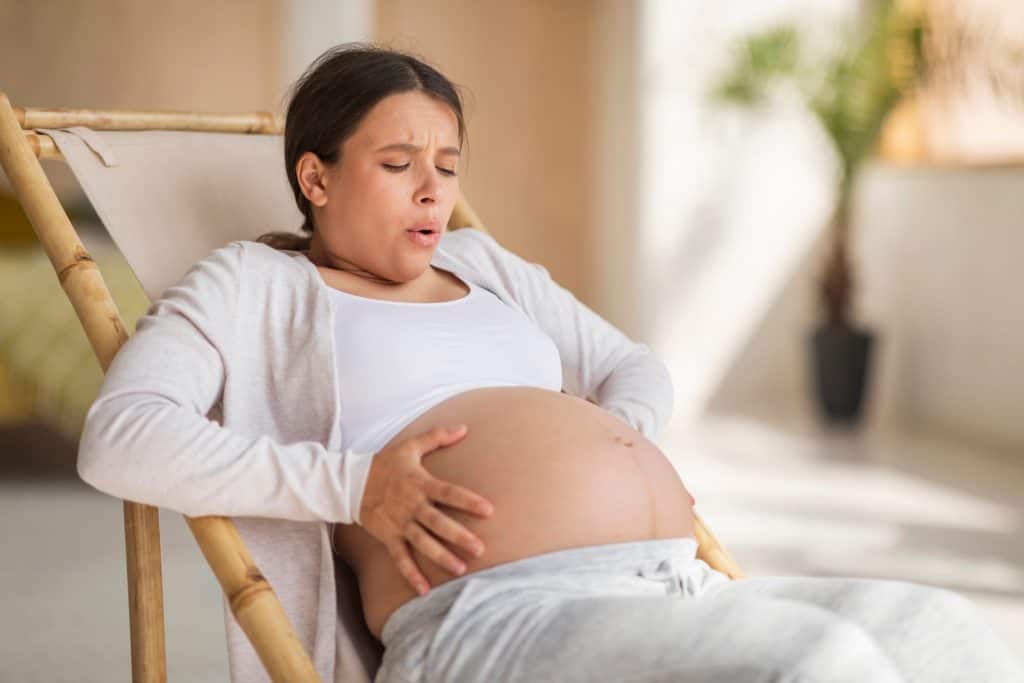Congratulations! You’re nearing the very end of your pregnancy and you’re now just a few steps away from meeting your little one. Many people who have been pregnant say that labor is the hardest part of pregnancy.
At the same time as your body is preparing for you to meet your baby, your baby is also getting ready to meet you. Moving around a lot during labor may be their way of getting into a good position for delivery. This is almost always a good sign, as it shows that your baby is strong, active, and ready to meet you.
Moving is just one of the many things your baby does in the womb up until the time of their birth. This article will explain 3 reasons why your baby may move like crazy in between contractions, as well as some circumstances where extra concern may be warranted.
Reasons Why Baby Moves Like Crazy In Between Contractions

To Be in A Good Position for Birth
Most babies born through a vaginal delivery are born in what is known as an occiput anterior position. A baby in an occiput anterior position has their head pointing down into the pelvic girdle, with their face towards the pregnant person’s back.
This is the position that generally leads to easier birth and a lower risk of complications. Most of the time, babies will get into this position by 34 weeks, but it is possible for babies to turn or flip into this position up until the time of birth.
You may also feel your baby wiggling and pushing their head down into your cervix instead of kicking at the walls of the womb. This action helps efface and dilate your cervix so that your baby can make their way out of the womb and birth canal.
You Are Paying More Attention to Their Movement
It is also possible your baby isn’t necessarily moving more than they usually would, but rather that you have just become more tuned into their movement.
With the many things that go into preparing for a baby’s arrival, from setting up a nursery, picking out clothes, and buying a multitude of other baby necessities, you might have been quite busy and preoccupied throughout your third trimester. It is easy to miss your baby’s more subtle movements.
While in labor on the other hand, you become focused on your baby’s birth and making sure they arrive into this world safe and healthy. Now, you are more inclined to feel their every flutter, kick, and roll between contractions.
Reacting to the Contractions
While contractions do not cause babies pain, they may feel a slight squeeze as your uterus helps move them downwards in preparation for delivery, similar to how you might feel if you were to squeeze through a hole or tight space.
You may feel as if your baby is moving around a crazy amount if they are trying to get comfortable in between contractions. Perfectly understandable, considering that they are now being rudely evicted by the walls of what has been their home for the past 9 months.
When To Be Concerned

During labor, healthy babies will more or less maintain the same activity levels that they had pre-labor. 10 movements per hour is considered average, although you may feel a greater or lesser amount of movement, depending on your baby’s baseline.
During labor, babies still experience sleep cycles that last between 20 and 40 minutes at a time, during which time you may feel little or no movement. There will be a clear pattern to their sleep-wake cycles that you will be able to notice and make note of.
Call your healthcare provider if you suddenly feel an big increase or decrease in the amount of movement, feel like the movement is unusual, has changed, or is different from how it was in earlier labor.
Normal movement during labor should be strong, but it should not feel as if your baby is frantic or panicking. Frantic and wild movement from your baby may be a sign of distress that needs to be addressed quickly by a healthcare provider.
While a change in your baby’s movement does not necessarily signal a problem, your healthcare provider will be able to provide you with some reassurance and peace of mind, while also catching problems early, should they arise.